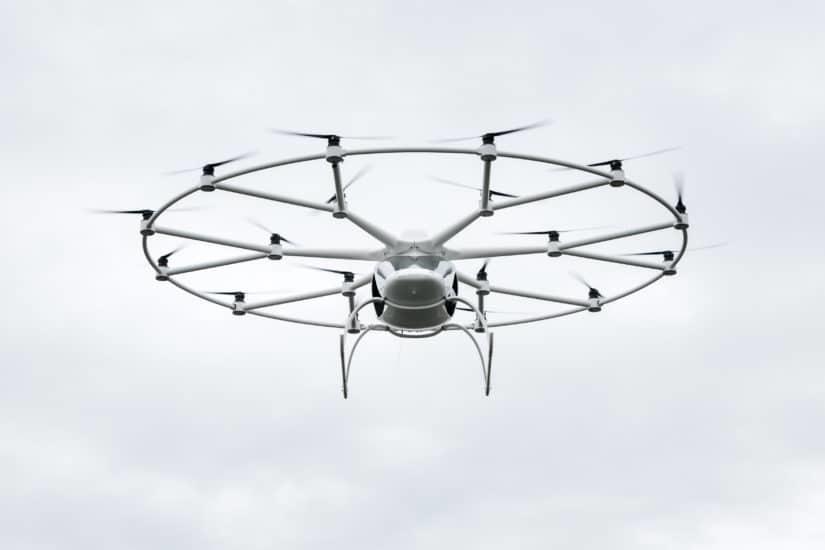Home » Manufacturers »
Volocopter GmbH (formerly e-Volo)

Headquarters: 50-employee company based in Bruchsal, Germany.
What: Based on drone technology, the Volocopter 2X is a two-passenger eVTOL powered by nine discrete electric battery packs, each of which powers two rotors. Approved as an ultralight vehicle in Germany, it recharges in 40 minutes.
The 18 rotors placed along a ring above the Volocopter 2X’s fuselage make it look like a helicopter from the future. The rotors balance out microturbulence and winds between skyscrapers. The aircraft flies quietly and cannot be heard over the background of city noise.
Volocopter 2X can fly between 40 and 62 mph for up to 30 minutes and has a maximum range of 17 miles. It uses four inertial movement units (IMUs), which constantly determine position and altitude. IMUs are used to maneuver aircraft as well as spacecraft, including satellites and landers. New developments in IMU-enabled GPS devices lets those devices work even when GPS signals are unavailable.
Daimler, parent company of Mercedes-Benz, has invested $30 million and Intel, which creates computer chips for autonomous cars and drones, is also an investor.
When: Volocopter 2X, the startup’s second-generation vehicle, took its first unmanned test flights in Dubai in September, 2017. Dubai is pursuing autonomous vehicles, aiming to have them handle a quarter of all passenger travel by 2030. Former Intel CEO Brian Krzanich was the Volocopter 2X’s first public passenger—his flight took place at the CES tech trade show in 2018.
Volocopter cofounder Alex Zosel aims to have air taxi service operating within its own hubs and ports within a decade. It’s anticipated that the Volocopter infrastructure system will be able to transport 10,000 people a day via a point-to-point connection.
The infrastructure will comprise of ports and hubs. The company envisions Volo-Hubs as similar to mass transit stations, with Volocopters landing and taking off every 30 seconds. Once landed, the Volocopter will be moved inside a Volo-Hub, where its battery packs will be swapped by robots before the Volocopter is moved to a passenger take-off area.
Volo-Ports expand the Volo-Hub system by offering direct access to a company, shopping mall, hotel, or train station. They don’t require any charging or parking infrastructure. Any heliport can be used as a Volo-Port with minimal modification.
“We are in close exchange with the relevant authorities in order to lay the groundwork for receiving a commercial license for operating in European cities,” said company spokesman Jakob Kramer.


